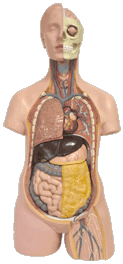At WiseGEEK, we're committed to delivering accurate, trustworthy information. Our expert-authored content is rigorously fact-checked and sourced from credible authorities. Discover how we uphold the highest standards in providing you with reliable knowledge.
What is Stereopsis?
Stereopsis is a process in which the brain synthesizes the information coming from both eyes to create a single image. In the process, the brain also gathers information about depth and texture in the surrounding environment. Stereopsis contributes significantly to depth perception in the close visual field, although other tactics are used by the brain to understand depth in the distant visual field. This is why people who lack vision in one eye sometimes have trouble with depth perception in the area immediately around them, but can accurately judge distance when looking at distant objects.
As everyone is aware, there are two eyes in the human head, and in most humans, they both work. Yet, instead of seeing two separate images when people open their eyes, people see a unified whole. When someone covers or closes one eye, one sees a slightly different scene than that seen by both, and covering the other eye will yield yet another slightly different scene.

With stereopsis, some items become visually shifted by the brain as it interprets the input from both eyes. For a simple demonstration, with both eyes open, hold a finger straight out in front of you. Then, close one eye. The finger should appear to move slightly, even though it has not. If you open your closed eye and close your open eye, the finger will jump to the other side. All of the objects in your near field of vision do this to some extent.
The brain uses the dual input from the eyes to learn more about where things in the near visual field are located. In the finger example, the finger appears to shift to the right when viewed from the left eye, and it shifts left when viewed from the right eye. When information from both eyes is combined, however, the brain understands that the finger is in the middle of the visual field, and it adjusts accordingly.
The brain also adjusts through stereopsis to allow people to experience a sense of depth perception, understanding where things are in the visual field by seeing where they are when viewed through either eye. The less an object appears to shift, the further away it is.
Stereopsis is harnessed in stereoscopic viewing, in which two flat images are projected to the eyes and the brain creates a three dimensional image out of them. Stereoscopic viewing's popularity has waxed and waned over the years, with children in particular often being fascinated by it.
AS FEATURED ON:
AS FEATURED ON:










Discussion Comments
After my mother had surgery on her right eye, she had to wear a patch while it healed. During this time, she had trouble grasping things.
She would see something with her left eye that clearly appeared to be right in front of her. When she went to grip it, she would find that it was actually slightly further over.
She said that every time this happened, she felt a tingling in her brain. I imagine that her mind was trying to conduct stereopsis with limited information. It didn’t understand that the right eye was currently out of service.
As soon as she removed the patch, it was so much easier for her to locate things. She could even throw trash into the garbage can again without missing her target.
Post your comments